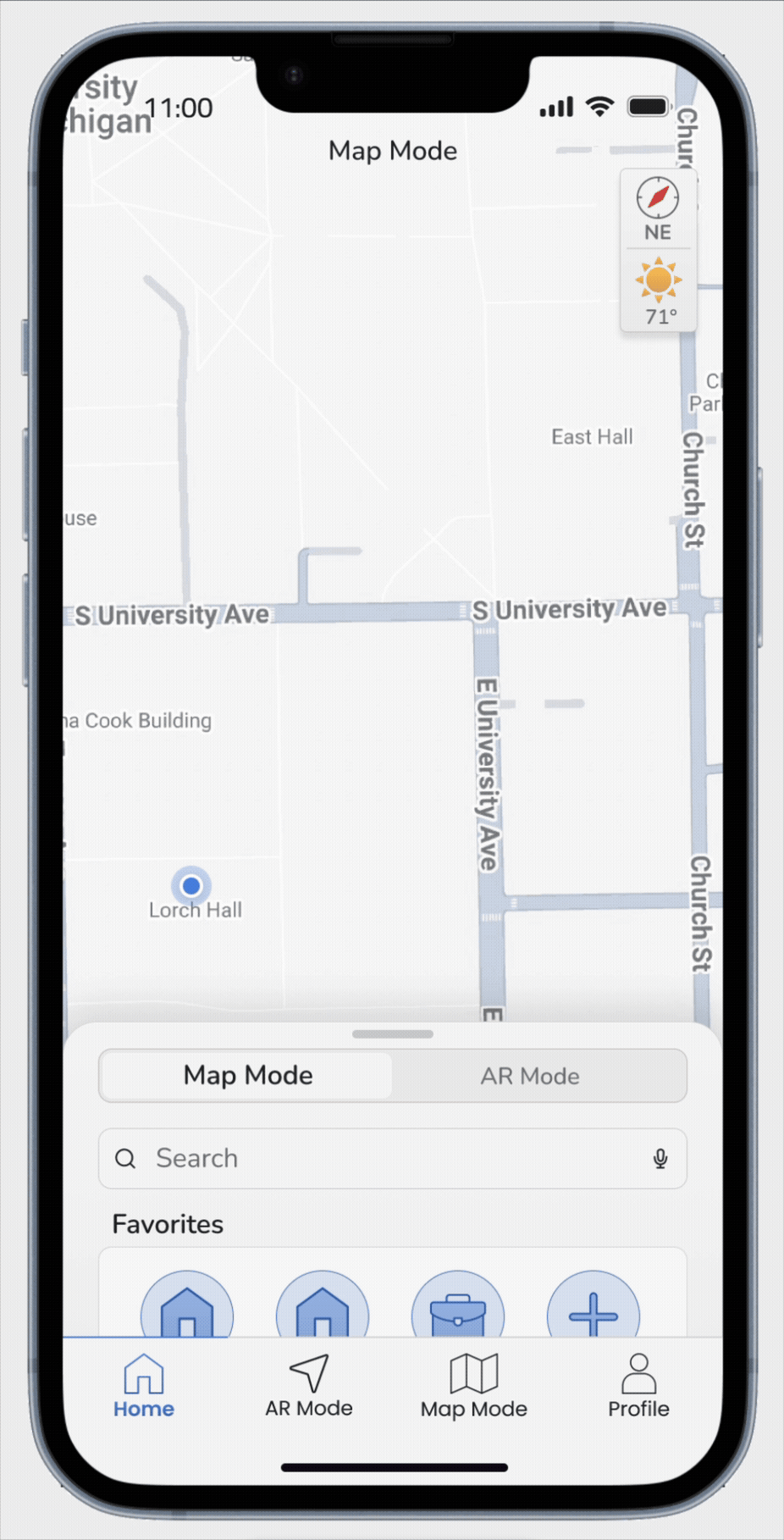ma(i)ze
The University of Michigan spans 3,200 acres across five main areas—Central, North, South, Medical, and East Campuses. Despite the university investing over $3 million in campus signage, students continue to face challenges navigating the environment.
This raised a critical research question: How are people actually navigating the University of Michigan’s campus—and why aren’t existing tools meeting their needs?
project type:
UX Research & UX/UI Design
project tools:
Miro, Figma, Google Suite, & Photoshop
project team & roles:
4 UX Researchers & 1 UI Designer



finding your way through the maze
On any given day at the University of Michigan–Ann Arbor, it’s not uncommon to see students huddled around their phones, spinning in circles as they try to figure out which direction Angell Hall is. The campus is large, interconnected, and full of winding paths that make getting from point A to point B surprisingly complicated.
Most students turn to navigation apps like Apple Maps or Google Maps—but these tools weren’t made for campuses. They’re great for getting across town, yet fail when you’re just trying to find the right entrance to a lecture hall or the quickest route to the next bus stop.
That gap inspired Ma(i)ze—a navigation app built specifically for U-M students. Ma(i)ze reimagines the campus experience by offering precise, student-focused guidance for everyday movement: from finding a new classroom to meeting up with friends across campus. Our goal is simple—to help Wolverines move through campus with confidence, speed, and ease.
the problem
Despite the University’s $3 million investment in new campus signage, confusion in navigating campus remains a daily frustration for students and visitors alike. Many rely on general-purpose apps that don’t account for pedestrian pathways, building entrances, or campus-only routes. As a result, students often experience unnecessary detours, wasted time, and stress when moving between destinations.
This raised a key question for our team: How are people actually navigating the University of Michigan’s campus—and why aren’t existing tools meeting their needs?
my contributions
Our team of four worked side-by-side as UX Researchers, diving into the daily wayfinding struggles students face on campus. Together, we interviewed students, crafted surveys, recruited participants, observed behaviors in the field, and coded hours of interview data to uncover the patterns beneath the confusion.
Alongside contributing to every stage of the research, I also brought our insights to life visually—designing the high-fidelity mockups that imagine what Ma(i)ze could look like if built for students’ real needs.
data collection & insights
research and insights
To understand how students navigate campus—and where existing tools fall short—we conducted a combination of field research, surveys, and interviews. Our goal was to capture real-world behaviors, pain points, and the strategies students use to get around.



.jpg)
defining the solution
Our research revealed that students don’t just need another map—they need a navigation experience built around the realities of campus life. The solution had to bridge the gap between how students move and how existing tools guide.

ideation & concept development
With our design goals defined, we moved into ideation—transforming research insights into tangible design opportunities. We began by creating user personas to represent the diverse needs of U-M students, from first-years unfamiliar with campus to upperclassmen navigating daily routines.


Next, we mapped a current state journey map to pinpoint friction points in wayfinding—confusing signage, unhelpful app direction results, and unclear building entrances. From there, we developed a future-state storyboard illustrating how Ma(i)ze could simplify these moments, showing a student’s journey from confusion to confidence.

.png)
designs & insights
high-fi mockup design, interaction flow, & screen design insights
After completing our research and developing user personas with their corresponding scenarios, I created high-fidelity UI mockups illustrating what Ma(i)ze could look like if the project were to continue into development. These mockups are accompanied by a detailed interaction flow and visuals explaining screen functionality.

interaction flow
The diagram and video below illustrates the user interaction flow for starting navigation to a location within Ma(i)ze using Map Mode.


screen functionality insights
The graphics below provide detailed insights into the functionality of each screen of Ma(i)ze.
ze%20Homepage%20%26%20Homepage%20Detailed%20Insights.png)
ze%20Homepage%20Directions%20%26%20Homepage%20Directions%20Detailed%20Insights.png)
ze%20Outdoors%20Nav%2C%20Outdoors%20Nav%20Detailed%2C%20%26%20Indoors%20Nav%20Insights.png)